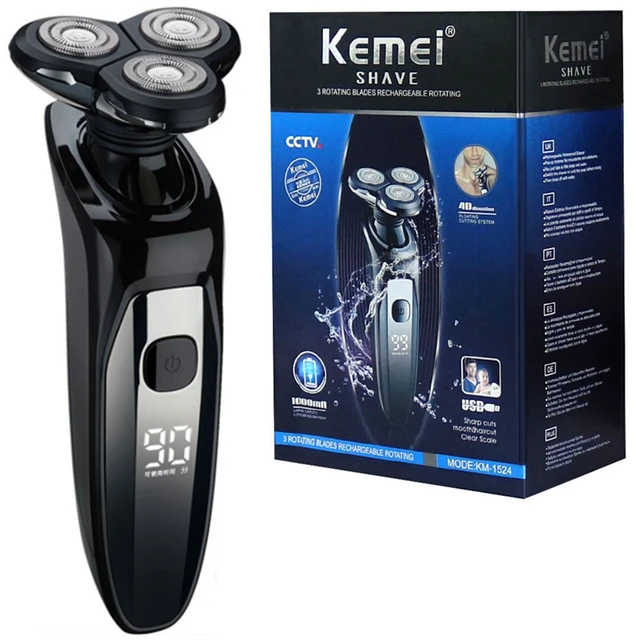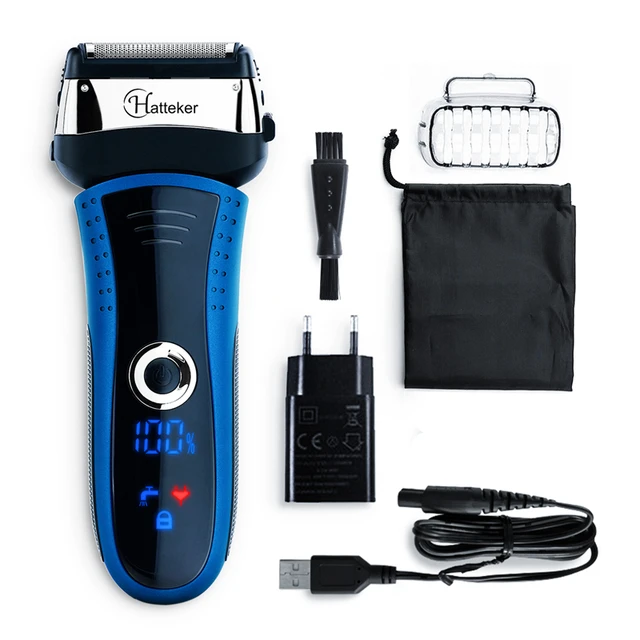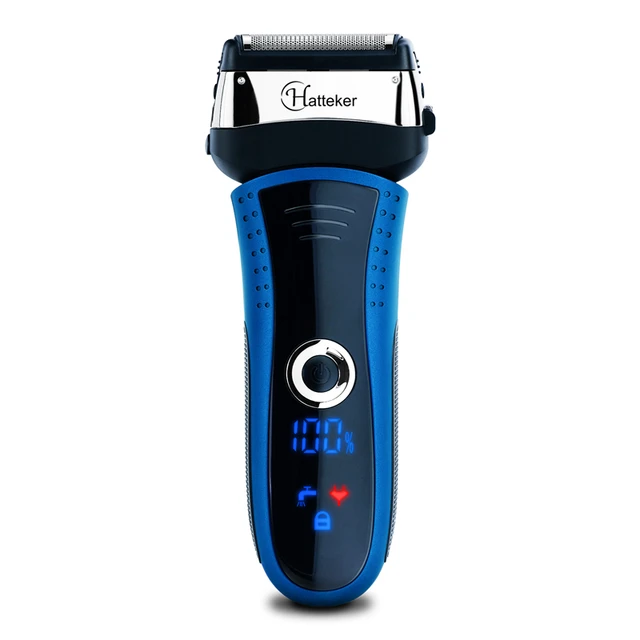Electric shavers have significantly advanced over time, providing users with a fast and convenient option compared to traditional shaving methods. Grasping how does an electric shaver work can deepen your appreciation for this grooming tool, while also guiding your buying choices and maintenance practices.
1. The Basics of Shaving
Before delving into the intricacies of electric shavers, it’s essential to understand the fundamental principles of shaving itself. Shaving is a method used to remove hair from the skin’s surface, typically involving a blade that cuts the hair at the follicle level.
1.1 Traditional Shaving vs. Electric Shaving
Traditional shaving often involves manual razors that require shaving cream or gel for lubrication. While this method can offer a close shave, it has its downsides, such as the potential for cuts, nicks, and razor burn.
In contrast, electric shavers employ various technologies to achieve a clean shave without the need for additional creams or gels. This convenience, combined with advanced safety features, makes electric shavers increasingly popular among consumers.
2. Types of Electric Shavers
Understanding the different types of electric shavers can provide deeper insight into how they work. There are primarily two types: foil shavers and rotary shavers.
2.1 Foil Shavers
Foil shavers consist of a thin layer of metal, known as a foil, that covers the blades. The design allows for a series of oscillating blades to move back and forth behind the foil, cutting hair as it passes through the holes in the foil. This type of shaver is excellent for achieving a softer and closer shave.
2.2 Rotary Shavers
Rotary shavers typically come with three circular heads designed to rotate independently. Each head contains blades that cut hair as the heads move in a circular motion. The flexibility of the rotating heads allows the shaver to easily navigate the contours of the face, making it particularly effective for people with larger facial features or a more pronounced jawline.
3. The Internal Mechanisms
To fully understand how an electric shaver works, it is crucial to explore the internal components that make up these grooming tools.
3.1 Power Source
Electric shavers can be either corded or cordless. Corded models rely on a continuous electrical supply, while cordless models function on rechargeable batteries. Most modern electric shavers feature lithium-ion batteries, which offer longer life and quicker charging times.
3.2 Motor
The motor is the heart of an electric shaver. It provides the necessary power to move the blades rapidly. The efficiency of the motor can significantly influence the shaving speed and performance. Powerful motors allow for quicker cutting, reducing the time spent shaving and minimizing irritation.
3.3 Blades
The blades are the elements responsible for cutting hair. In foil shavers, the blades oscillate back and forth; in rotary shavers, they rotate. The sharpness and quality of the blades play a crucial role in the efficiency and comfort of the shaving experience. Regular maintenance, such as cleaning and replacing dull blades, will keep the electric shaver functioning optimally.
3.4 Shaving Head
The shaving head holds the blades and features design elements that conform to the contours of the face. In foil shavers, the foil is the critical component, while rotary shavers utilize flexible heads that adjust to the user’s face shape.
3.5 Lubrication System
Some high-end electric shavers come with automatic lubrication systems. These systems dispense oil or other lubricants onto the blades, ensuring smooth operation and reducing the heat generated during shaving. This feature prolongs the life of the blades and enhances the overall shaving experience.
4. How Electric Shavers Achieve a Close Shave
So how does an electric shaver work to provide a clean and close shave? The effectiveness of an electric shaver relies on several factors, including blade design, motor power, and the configuration of the shaving head.
4.1 Blade Movement
In electric shavers, the type of blade movement plays a crucial role in the efficiency of the shave. Foil shavers utilize a back-and-forth motion that allows for precise cutting. The back-and-forth action means that hair can be cut at various angles, improving the likelihood of achieving a close shave.
In contrast, rotary shavers use a circular motion that allows the blades to catch more hair, particularly in areas with thick hair growth. As the circular heads rotate, they can flex slightly, enabling them to glide smoothly against the skin and adjust to its contours.
4.2 Shaving Technique
Using an electric shaver may require different techniques compared to traditional shaving. For the best results, it’s advisable to move the shaver slowly against the direction of hair growth. This technique helps ensure that the blades catch and cut the hair effectively.
4.3 Skin Preparation
While electric shaving is often designed to be used on dry skin, prepping the skin can further enhance the shaving experience. Cleaning the face before shaving can help remove dead skin cells and hair, leading to a closer shave. Some users also find that using aftershave products can soothe the skin post-shave, especially for those with sensitive skin.
5. Benefits of Electric Shavers
Understanding how an electric shaver works also helps illuminate the advantages they offer over traditional shaving methods.
5.1 Speed and Convenience
One primary benefit of electric shavers is their speed. Users can quickly shave without the extra fuss of applying shaving cream or needing additional tools. This speed is particularly advantageous for those with busy schedules who need to get ready quickly.
5.2 Reduced Risk of Cuts and Irritation
Electric shavers are generally safer than their manual counterparts, with built-in protective features that minimize the risk of cuts and nicks. The absence of direct contact with blades significantly reduces the chances of razor burn or skin irritation.
5.3 Versatility
Many electric shavers are designed for both wet and dry use, allowing users the flexibility to shave in whatever setting they choose. Some models even allow for trimming and grooming in addition to shaving, making them multi-functional.
5.4 Cost-Effectiveness
Although electric shavers often have a higher upfront cost than traditional razors, they can be more economical in the long run. With no need for disposable blades or shaving creams, users can save money over time.
 6. Maintenance and Care
6. Maintenance and Care
While electric shavers offer many advantages, they also require regular maintenance to function properly. Below are some care and upkeep steps to keep your electric shaver running smoothly.
6.1 Cleaning
Most electric shavers are equipped with removable heads, allowing for easy cleaning. It’s essential to clean the shaver after every use to prevent hair build-up and maintain hygiene. Some models come with cleaning stations that perform this task automatically.
6.2 Blade Replacement
Over time, the blades will dull and need to be replaced. Many manufacturers recommend replacing blades every six to twelve months, depending on usage. Regularly replacing the blades ensures that the shaver continues to provide a close, effective shave.
6.3 Charging and Battery Care
For cordless models, following the manufacturer’s guidelines for charging and battery care is essential. Avoid overcharging the battery and ensure it is entirely depleted before recharging to maximize battery longevity.
6.4 Lubrication
For shavers equipped with lubrication features, it’s crucial to follow the recommended procedures for oiling the blades. Proper lubrication keeps the blades operating smoothly and reduces friction, which prolongs the life of the shaver.
7. Choosing the Right Electric Shaver
Selecting the right electric shaver involves several considerations based on individual preferences and needs.
7.1 Skin Type
Consideration of skin type is crucial; some users may have sensitive skin that requires a gentler touch. Foil shavers, due to their design, may be better suited for sensitive skin compared to rotary models.
7.2 Hair Type
Those with coarse hair may benefit more from a rotary shaver, while individuals with finer hair might find a foil shaver more efficient. Assessing hair type can guide users in choosing the most effective shaver for their needs.
7.3 Shaving Frequency
For frequent shavers, models with longer battery life and quick-charging features may be essential. Regular shavers may prioritize ease of maintenance and cleaning.
Conclusion: how does an electric shaver work
In summary, understanding how does an electric shaver work involves delving into its components, types, benefits, and maintenance tips. It’s evident that electric shavers provide an efficient and user-friendly alternative to traditional shaving methods. Their ability to deliver quick, safe, and efficient shaving experiences has made them a staple in modern grooming. Whether you’re considering stepping into the world of electric shaving or looking to enhance your current routine, grasping these concepts will empower you to make informed decisions regarding your grooming choices. As you can see, the electric shaver is not just a simple tool; it’s a marvel of modern engineering designed to meet the diverse needs of users around the world. How does an electric shaver work? By leveraging a combination of innovative technology and user-friendly design, it provides a reliable solution for personal grooming.


